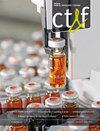利用实验室测量、时域有限差分建模和群全局优化对探地雷达屏蔽天线进行表征
IF 0.5
4区 工程技术
Q4 ENERGY & FUELS
引用次数: 0
摘要
全波形反演(FWI)是一种优化方法,可获取地面内部电磁特性的高质量图像,如介电常数、磁导率或电导率。FWI要求包括参数的初始地下图像(起点模型)、波传播模型、成本函数和数据采集过程中使用的源小波。通常,源小波是根据采集的数据估计的,或者根据天线特性建模。本文从对源信号的观测测量出发,采用全局优化方法对GSSI研制的商用探地雷达(GPR)屏蔽天线的材料进行了估计。然后利用估计的震源对电磁信号的传播进行建模,并通过FWI估计SEAM模型的电磁参数。实验结果表明,在不考虑辐射方向图的情况下,土壤特征与估计的源辐射和模式辐射相比,反演得到的图像质量更好。实际上,当初始模型离正确解较远时,在反演过程中使用正确源的影响更为明显。本文章由计算机程序翻译,如有差异,请以英文原文为准。
Characterization of a ground penetrating radar shielded antenna using laboratory measurements, FDTD modeling and swarm global optimization
Full Waveform Inversion (FWI) is an optimization method that retrieves high-quality images of the ground's internal electromagnetic properties, such as permittivity, permeability, or conductivity. FWI requirements include an initial subsurface image of the parameters (starting point models), a wave propagation model, a cost function, and the source wavelet used during data acquisition. Usually, the source wavelet is estimated from the acquired data, or modelled from the antenna characteristics. In this study, the materials of the shielded antenna of a commercial Ground Penetrating Radar (GPR), developed by GSSI, are estimated using a global optimization method, from the observation measurements of the source signal. The estimated source is then used to model the wave propagation of the electromagnetic signal, and to estimate the electromagnetic parameters of the SEAM model via FWI. Experimental results show that the soil characteristics with the estimated source and pattern radiations retrieve better quality images than the inversion when the radiation pattern is neglected. In fact, the impact of using the correct source during the inversion is more evident when the initial model is distant from the correct solution.
求助全文
通过发布文献求助,成功后即可免费获取论文全文。
去求助
来源期刊

Ct&f-Ciencia Tecnologia Y Futuro
Energy-General Energy
CiteScore
1.50
自引率
0.00%
发文量
7
审稿时长
>12 weeks
期刊介绍:
The objective of CT&F is to publish the achievements of scientific research and technological developments of Ecopetrol S.A. and the research of other institutions in the field of oil, gas and alternative energy sources.
CT&F welcomes original, novel and high-impact contributions from all the fields in the oil and gas industry like: Acquisition and Exploration technologies, Basins characterization and modeling, Petroleum geology, Reservoir modeling, Enhanced Oil Recovery Technologies, Unconventional resources, Petroleum refining, Petrochemistry, Upgrading technologies, Technologies for fuels quality, Process modeling, and optimization, Supply chain optimization, Biofuels, Renewable energies.
 求助内容:
求助内容: 应助结果提醒方式:
应助结果提醒方式:


